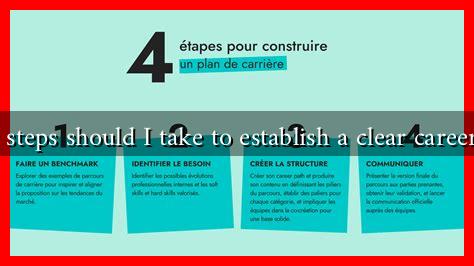-
Table of Contents
What Steps Should I Take to Establish a Clear Career Path?
Establishing a clear career path is essential for professional growth and personal satisfaction. A well-defined career trajectory not only helps you set goals but also provides a roadmap for achieving them. In this article, we will explore the steps you can take to create a clear career path, supported by examples, case studies, and relevant statistics.
1. Self-Assessment: Know Yourself
The first step in establishing a clear career path is to conduct a thorough self-assessment. Understanding your strengths, weaknesses, interests, and values is crucial for making informed career decisions.
- Identify Your Strengths: Take stock of your skills and talents. Tools like the StrengthsFinder assessment can help you pinpoint your unique abilities.
- Evaluate Your Interests: Consider what activities you enjoy and what industries excite you. The Holland Code (RIASEC) can guide you in identifying suitable career options.
- Reflect on Your Values: Determine what matters most to you in a job—be it work-life balance, salary, or opportunities for advancement.
For example, a recent study by the National Career Development Association found that individuals who engage in self-assessment are 50% more likely to find job satisfaction compared to those who do not.
2. Research Career Options
Once you have a clear understanding of yourself, the next step is to research potential career paths. This involves exploring various industries, job roles, and growth opportunities.
- Utilize Online Resources: Websites like LinkedIn, Glassdoor, and the Bureau of Labor Statistics provide valuable insights into different careers, including salary ranges and job outlooks.
- Network with Professionals: Reach out to individuals in your desired field through informational interviews or networking events. This can provide firsthand knowledge about the industry.
- Consider Job Shadowing: If possible, shadow professionals in your field of interest to gain a better understanding of daily responsibilities and workplace culture.
According to a survey by Jobvite, 70% of job seekers find their next opportunity through networking, highlighting the importance of building connections in your desired field.
3. Set Clear Goals
With a solid understanding of your interests and the available career options, it’s time to set clear, achievable goals. Goals should be SMART: Specific, Measurable, Achievable, Relevant, and Time-bound.
- Short-Term Goals: These could include completing a relevant certification or gaining experience through internships.
- Long-Term Goals: Consider where you want to be in five to ten years. This could involve aiming for a specific job title or level of responsibility.
For instance, if you aspire to become a project manager, a short-term goal might be to complete a Project Management Professional (PMP) certification within the next year.
4. Develop Skills and Gain Experience
To achieve your career goals, you must continuously develop your skills and gain relevant experience. This can be done through various means:
- Formal Education: Pursuing a degree or additional certifications can enhance your qualifications.
- Online Courses: Platforms like Coursera and Udemy offer courses that can help you acquire new skills at your own pace.
- Internships and Volunteer Work: Gaining practical experience through internships or volunteer opportunities can significantly boost your resume.
A report by the National Association of Colleges and Employers found that 60% of employers prefer candidates with internship experience, underscoring the importance of gaining hands-on experience.
5. Seek Mentorship
Having a mentor can provide invaluable guidance as you navigate your career path. A mentor can offer insights, share experiences, and help you avoid common pitfalls.
- Identify Potential Mentors: Look for individuals in your network who have experience in your desired field.
- Establish a Relationship: Approach potential mentors with a clear request for guidance and be respectful of their time.
Research shows that 75% of executives credit their mentors with helping them achieve their career success, highlighting the importance of mentorship in professional development.
Conclusion: Charting Your Course
Establishing a clear career path requires self-assessment, research, goal-setting, skill development, and mentorship. By taking these steps, you can create a roadmap that leads to professional fulfillment and success. Remember, your career path is not set in stone; it can evolve as you grow and learn. Stay adaptable, seek opportunities, and continue to invest in your personal and professional development.
For more resources on career development, consider visiting CareerOneStop, a comprehensive resource for job seekers and career changers.

